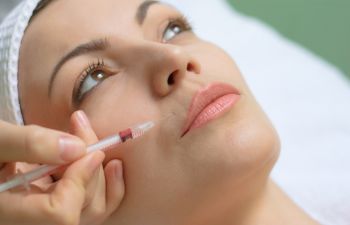
In the quest for eternal youth and beauty, humanity has been experimenting with various methods of facial enhancement for centuries. One of the most intriguing chapters in this story is the history of injectable facial fillers. The common theme throughout this history has been the pursuit of the perfect material – one that could safely replace volume, smooth out lines, and rejuvenate the face. Our dream filler would possess a multitude of qualities: safety, biocompatibility, longevity, natural appearance, reversibility, and affordability. Join us as we journey through time to explore the evolution of facial fillers and how we arrived at the modern era of injectable treatments.
The Advent of Facial Filling Agents
The late 1800s marked the beginning of the era of facial enhancement with injectable materials. This period coincided with the invention of the syringe, enabling the administration of various chemical agents to enhance facial features.
Liquid Paraffin: The First Attempt
In 1899, Robert Gersuny made history by injecting liquid paraffin into a patient to create a testicular prosthesis. This procedure marked the first reported use of an injectable material for cosmetic purposes. Paraffin gained popularity in the medical community and was often used for nasal augmentation. However, its use came with a slew of complications, including inflammation, infection, embolism, and the development of yellowish skin plaques at the injection site. The infamous Duchess of Marlborough’s experience with paraffin injections serves as a cautionary tale. The paraffin migrated to various parts of her face, resulting in disfigurement and social isolation.
Vegetable Oil, Mineral Oil, Lanolin, and Beeswax
Over the years, injectables such as vegetable oil, mineral oil, lanolin, and beeswax were explored for cosmetic enhancements. Unfortunately, these substances were also associated with undesirable complications, including migration, granuloma formation, and scarring, leading to their abandonment as viable options.
Autologous Fat Injections: A Promising Technique
During the late 1800s, autologous fat injections emerged as an alternative method for facial enhancement and replacing lost volume. This technique experienced a revival with the introduction of high vacuum suction and blunt cannulas in 1982. However, inconsistent results and unpredictable longevity hindered its widespread adoption.
The Silicone Era
The 1960s saw the rise of liquid silicone injections as a popular cosmetic treatment. Silicone, a polymer of dimethylsiloxanes, initially gained fame in Japan for breast augmentation in the 1940s before making its way to the United States. However, it became evident that injected silicone could migrate and lead to severe complications, including fistulas and, tragically, deaths. Some patients required mastectomies as a result. Due to the alarming complications associated with injectable silicone, Nevada became the first state to ban its use. Despite these issues, silicone injections continued in some regions, including Europe, Canada, Mexico, and among certain U.S. physicians.
Regulatory Oversight: The FDA Steps In
The Federal Food, Drug, and Cosmetic Act of 1938 granted the FDA the authority to oversee the safety of medical devices, including facial fillers. Manufacturers were required to notify the FDA at least 90 days in advance of marketing a new medical device. The act also mandated that companies could only promote uses of their products that had received FDA approval. The term “off-label” use referred to using a product in a manner not approved by the FDA, and it was illegal for manufacturers to promote off-label usage.
The Rise of Bovine Collagen
In the late 1970s, clinical trials of bovine collagen were conducted to address age-related wrinkles. After six years of development, testing, and clinical trials, bovine collagen received FDA approval in 1981. However, prior to facial injection, skin testing was necessary to diagnose allergies. Zyderm made history by becoming the first FDA-approved facial filler for cosmetic use.
The Era of Hyaluronic Acid (HA)
The need for fillers that did not require skin testing and offered longer-lasting results led to the discovery of hyaluronic acid (HA). HA, a highly hydrophilic glycosaminoglycan found in various tissues, revolutionized the field. Its safety, reliability, and relatively long duration of action made it the most widely used filler material. In 2003, HA received FDA approval for cosmetic use, opening the doors for a new era of injectable treatments.
The Future of Injectable Facial Fillers
As we look to the future, the facial filler industry is poised for further rapid expansion. Many new fillers are undergoing FDA processes, along with modified versions of existing products. Predicting the exact trajectory is challenging, but one thing is certain: the quest for the perfect injectable facial filler continues, driven by our desire for beauty, confidence, and the preservation of youth.
The history of injectable facial fillers is a testament to human ingenuity and our unwavering pursuit of beauty, and with each advancement, we move closer to achieving the perfect filler material that meets all our desires and expectations.
If you are considering facial fillers or other non-surgical facial cosmetic treatments, reach out to Dr. Rivkin’s office today to schedule your consultation with an experienced and renowned non-surgical facial cosmetic enhancement specialist.
Posted on behalf of
11645 Wilshire Blvd., Suite 800
Los Angeles, CA 90025
Phone: (310) 443-5273
Email: info@westsideaesthetics.com
Monday - Friday I 9:00 AM – 6:00 PM
Saturday I 8:00 AM - 2:00 PM


)